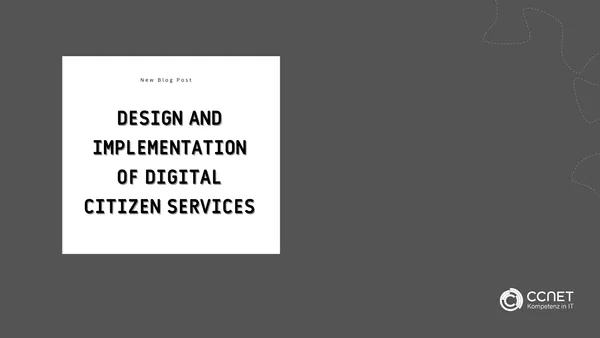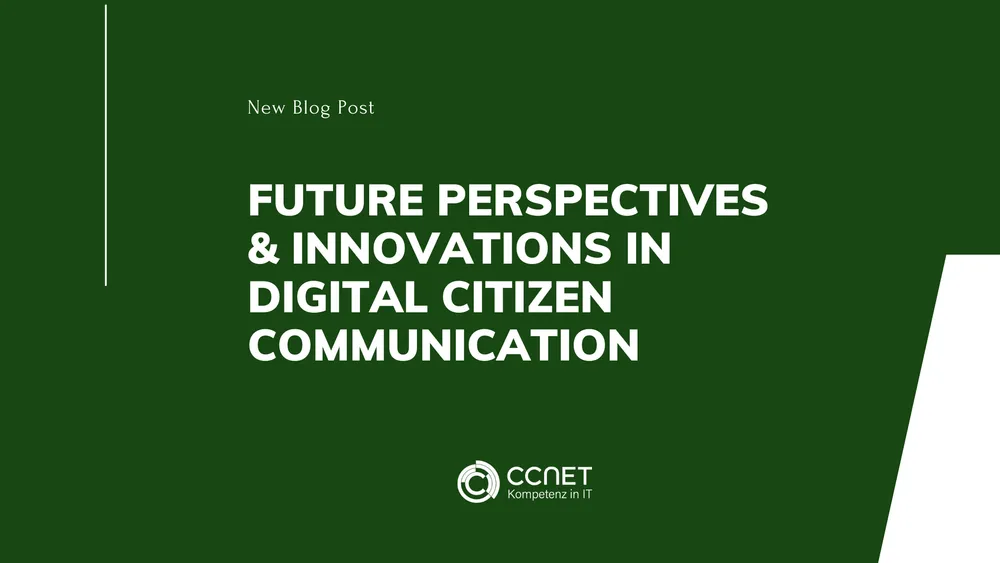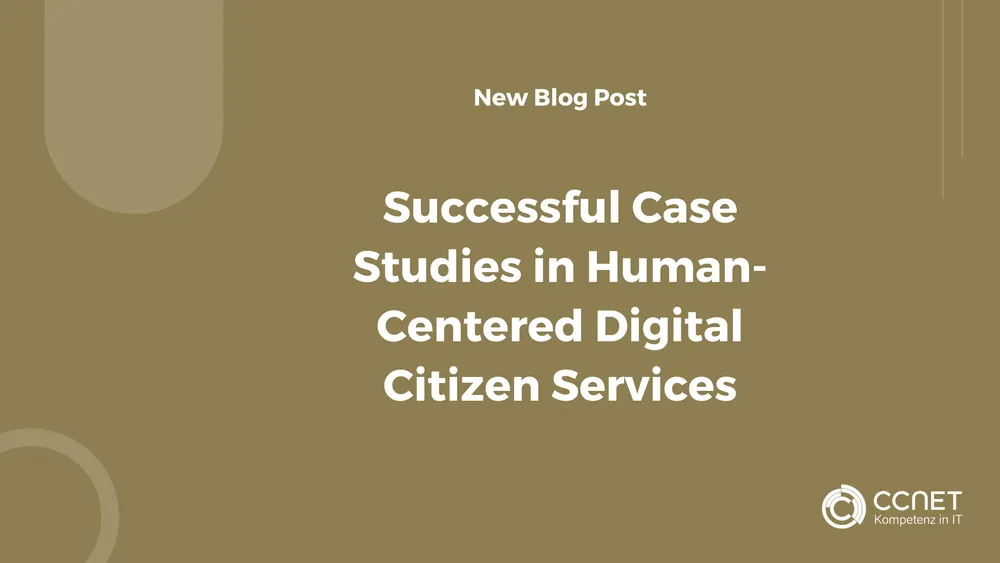
CCNet
Jun 7, 2024 • 2 min read

Design and implementation of digital citizen services
In the previous parts of this series, we covered the basics of human-centered design (HCD) and the role of empathy and deep user understanding in the design process. The third part is about the practical approaches to designing digital citizen services and the challenges that arise. The focus is on the implementation of HCD principles in real projects and how to deal with specific public sector requirements.
Further information can be found here: Software-development
Practical approaches to the design of digital citizen services
Implementing HCD in the design of digital citizen services requires a mix of creativity, technical expertise and a deep understanding of citizens' needs. Here are some of the key approaches and methods used in this process:
- Prototyping and Iterative Testing: The HCD process is iterative, meaning that designers repeatedly create and test prototypes to gather feedback from users. This approach makes it possible to identify errors early on and improve the solution step by step.
2 Participatory design: In this approach, designers work closely with users to develop solutions that meet their needs. Participatory design encourages the involvement of citizens in the design process, which leads to higher acceptance of the resulting services.
- usability testing: Usability testing is an essential part of HCD. These tests make it possible to evaluate the usability of digital citizen services and ensure that they are easily accessible and intuitive to use.
4 Design Thinking Workshops: These workshops provide a collaborative environment where designers, developers and stakeholders come together to develop creative solutions. Design Thinking encourages innovative ideas and helps to break through traditional thinking patterns.
Challenges in the public sector
Designing digital citizen services comes with specific challenges that arise from the nature of the public sector and the diverse needs of citizens. Some of these challenges are:
- Complex stakeholder structures: In the public sector, there are often a variety of stakeholders who have different interests and expectations. Designers need to be able to navigate these complex structures and achieve consensus.
2 Regulatory requirements: Public projects are subject to strict regulations and guidelines. These requirements can constrain the design process and require additional steps to ensure compliance.
3 Longer project durations: Public sector projects can take longer due to bureaucratic processes and approvals. Designers must show patience and perseverance to implement HCD principles in such environments.
4 Cost constraints: Public projects often have limited budgets, which restricts resources for design and implementation. Designers must find creative solutions to develop high quality digital services within these constraints.
Solutions to challenges in the public sector
Various approaches can be used to overcome the above challenges:
-
Stakeholder management: Through clear communication and active engagement, designers can ensure that all stakeholders are on the same page and their expectations are met.
-
Flexibility and adaptability: In an ever-changing environment, it is important to remain flexible and adapt the design process to new requirements.
-
User-oriented communication: Communication with citizens should be clear, transparent and understandable. This promotes trust in digital citizen services and increases acceptance.
-
Iterative implementation**: By implementing digital citizen services incrementally, designers can respond quickly to feedback and make adjustments to better meet the needs of citizens.
Conclusion
Designing and implementing digital citizen services is a challenging process that requires both creativity and a deep understanding of citizens' needs. Human-centered design offers an effective approach to overcoming these challenges and developing digital services that are accessible, user-friendly and sustainable. By integrating prototyping, participatory design and usability testing into their work, designers can ensure that digital citizen services meet the needs of citizens and make a positive contribution to society.


